The Hindu thanksgiving festival dedicated to the sun and Chhathi maiya sees a plethora of unique prasad made throughout the country

Celebrated twice a year, Chhath puja is a four-day festival that is believed to have been observed since epics like the Mahabharata were written. Kaddu-bhaat and chana dal is made for prasad on the first day. Pic/Anurag Ahire
It’s time for thekua, kasaar, khaaja and rasiya. These lesser-known dishes are made across various regions of India during Chhath puja, an elaborate four-day festival celebrated in Bihar, Jharkhand, Eastern Uttar Pradesh, parts of Nepal, and in Mumbai too.
The word chhath comes from six since the puja begins on the sixth day of the Hindu calendar month of Kartik. Food curator and Bihari food pop-up specialist, Rachna Prasad tells us, “The Sun is considered the God of energy and the source of healing in Hinduism. People seek his protection and blessings during this puja, which is celebrated twice a year, once in summer [Chaiti Chhath] on the sixth day after Holi] and then in winter post-Diwali. Abstaining from food and water is encouraged during the festival, as worshippers participate in a variety of rituals and women sing traditional songs.
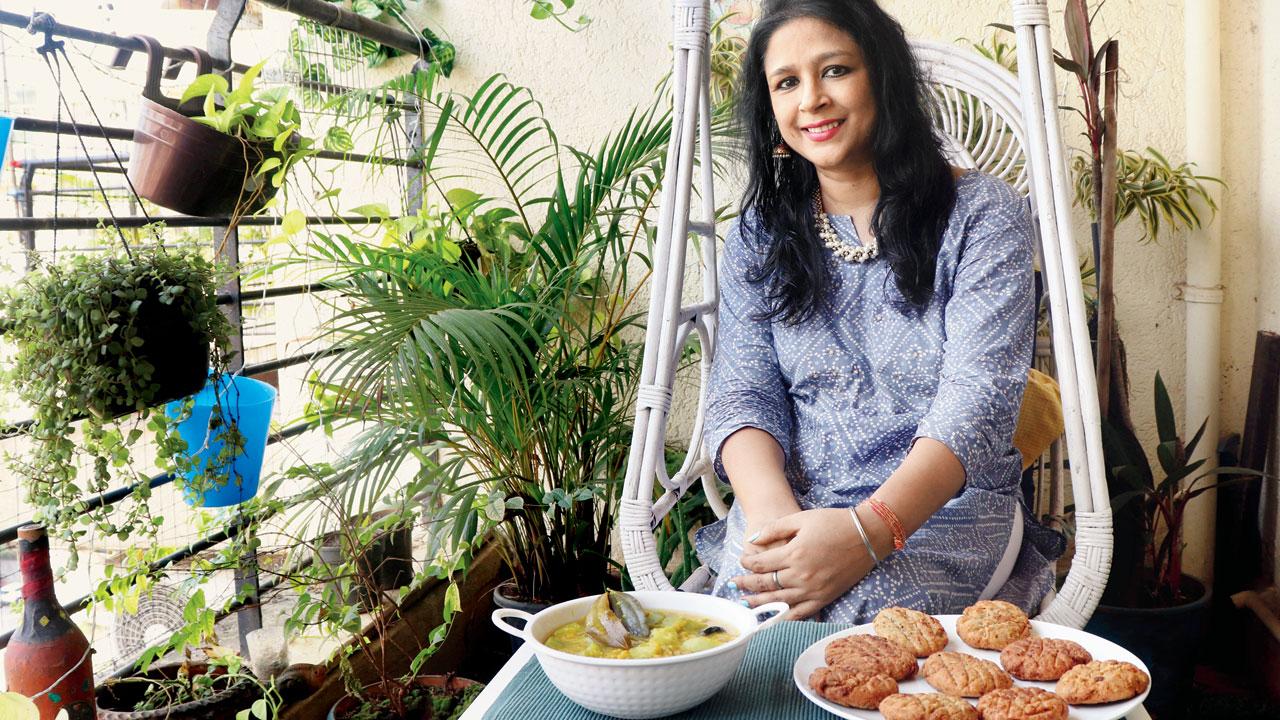
The first day is nahay-khay (bath and eat) where a cleansing dip is taken in the river, and holy water from the Ganga is used to prepare dishes like puri, kheer, kaddu-bhaat and chana dal as prasad for the puja. On the second day of lohanda and kharna, a full day fast is broken after performing a special ceremony at sunset. “Rasiya [kheer made of jaggery, rice, and milk] and chapati along with banana is offered to Chhati maiya, then shared with family and friends. Then starts another 36-hour fast without water. The third day is sandhya arghya spent preparing prasad to make an offering to the setting sun by the river. Clay diyas are lit under the covering of five sugarcanes and sent afloat, resembling numerous stars on the water. Devotees flock to the Ganga to witness this unique ceremony; and on the fourth day— bhor aragya—devotees rise at dawn, head to the riverbank before sunrise, make offerings to the rising sun and Chhati maiya, and break their fast with ginger and water after offering prasad to all the deities,” says Prasad.
Rasiya
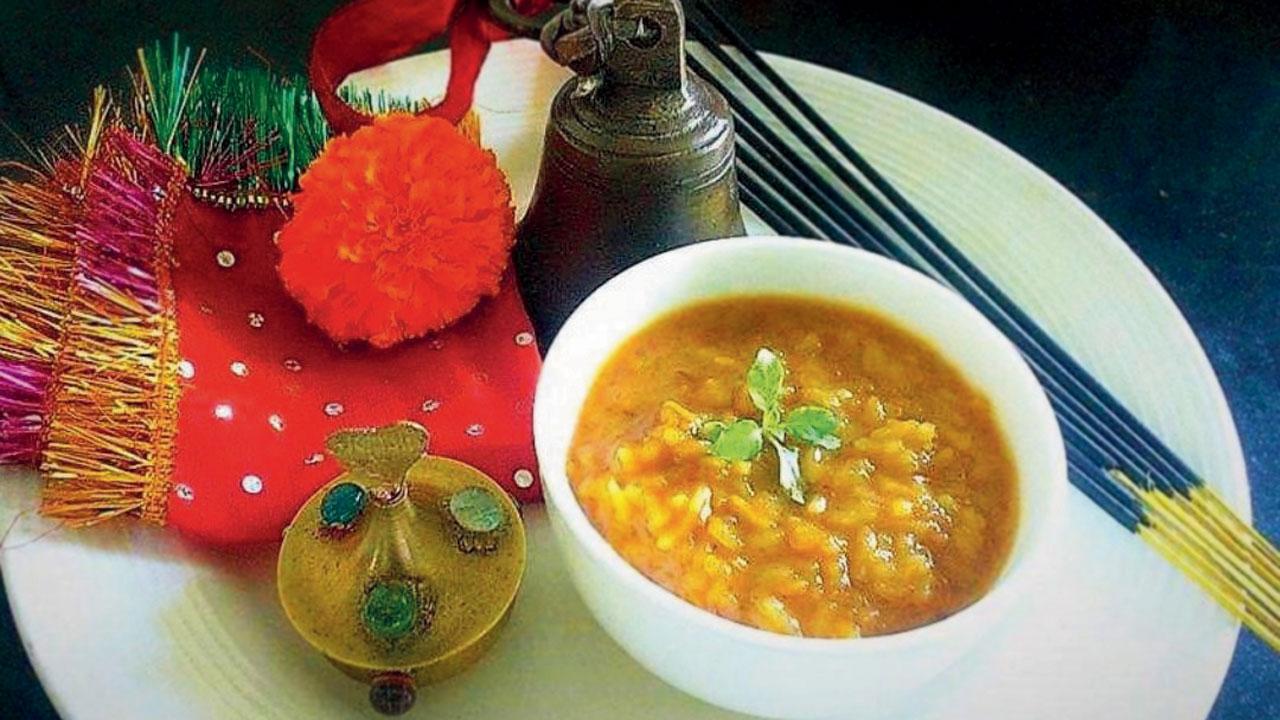
Ingredients
100 gm tukda rice
250 gm jaggery (grated and soaked in water)
1 litre milk
50 gm almond (grated)
50 gm cashew (grated)
50 gm raisins (soaked in warm water)
5 green cardamom (crush seeds to powder)
Method
Clean rice, wash it thoroughly and soak in water for two hours. Strain to drain out excess water. Take milk in a deep heavy vessel and place it on flame for simmering. Add rice to it and give it a nice stir with a wooden spatula. Reduce the flame now and keep stirring every two minutes. Once the rice is cooked and tender, add cashews, raisins and almonds, followed by cardamom powder. In a separate vessel, simmer the jaggery until it dissolves completely. Strain the jaggery syrup through a sieve and mix it with the kheer. Give a nice and gentle stir. Garnish with chopped cashews and almonds.
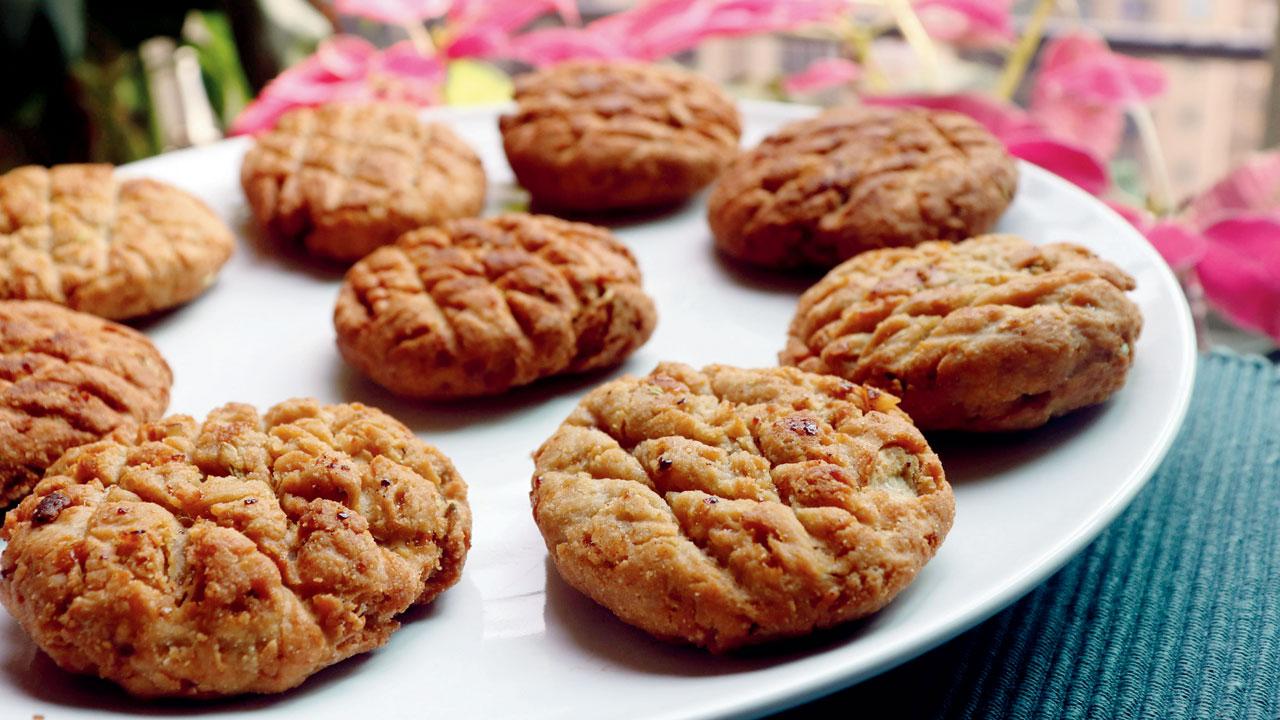
Thekua
For Kandivli-based Smita Verma and her friend Alpana Varma, Surya devta or Sun god is the source of all life on Earth. “We express our gratitude to him and pray that he continues to bless everyone with happiness, good health and prosperity,” says Verma. “This is Bihar’s favourite festival performed by both men and women. It is a rigorous fast kept for the well-being of the family. Strict rules apply to the entire family, including abstaining from alcohol and meats, bathing daily and ensuring that the home is clean. We make kaddu bhaat on the first day of the puja. It is chana dal and pumpkin, cooked in haldi and salt with a chhaunk (tempering) of jeera, clove, cardamom and green chilly in ghee. It is believed that kaddu is filling and hydrating and the sattvic preparation cleanses the mind.”
Kaddu bhaat
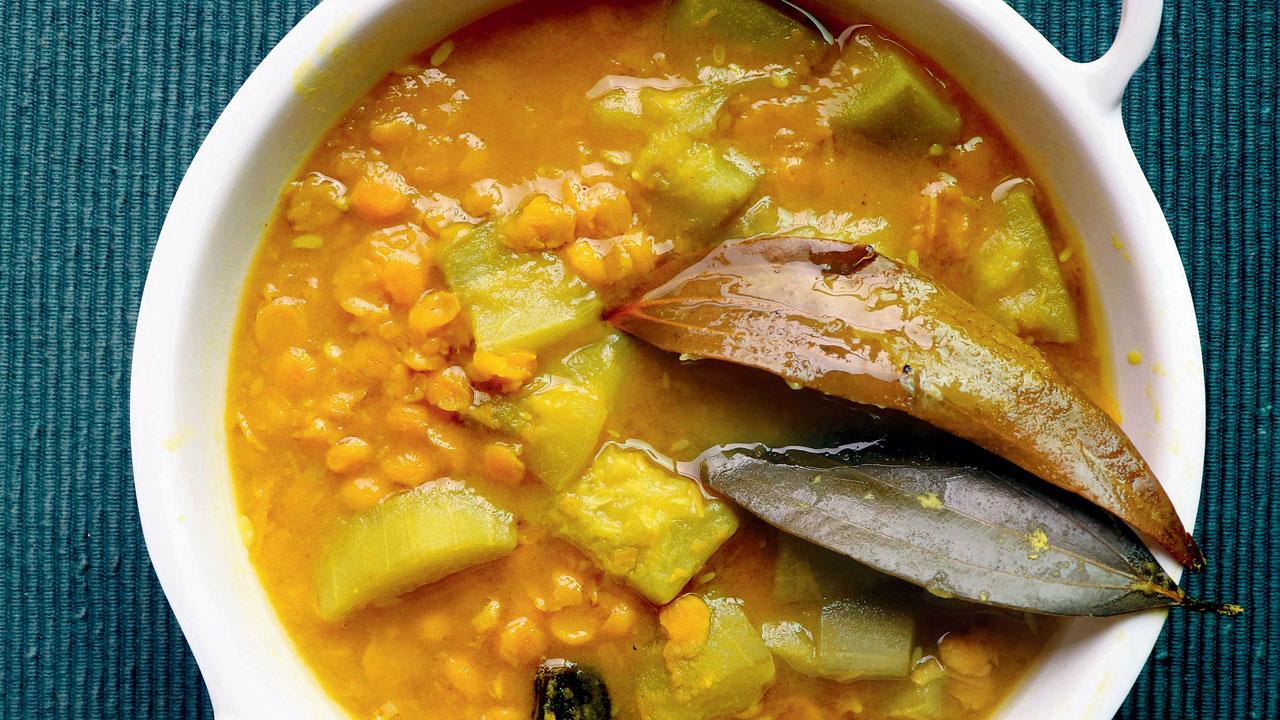
Ingredients
1 cup rice
1 cup chana dal
1 cup dudhi or bottle gourd
1/2 tsp turmeric
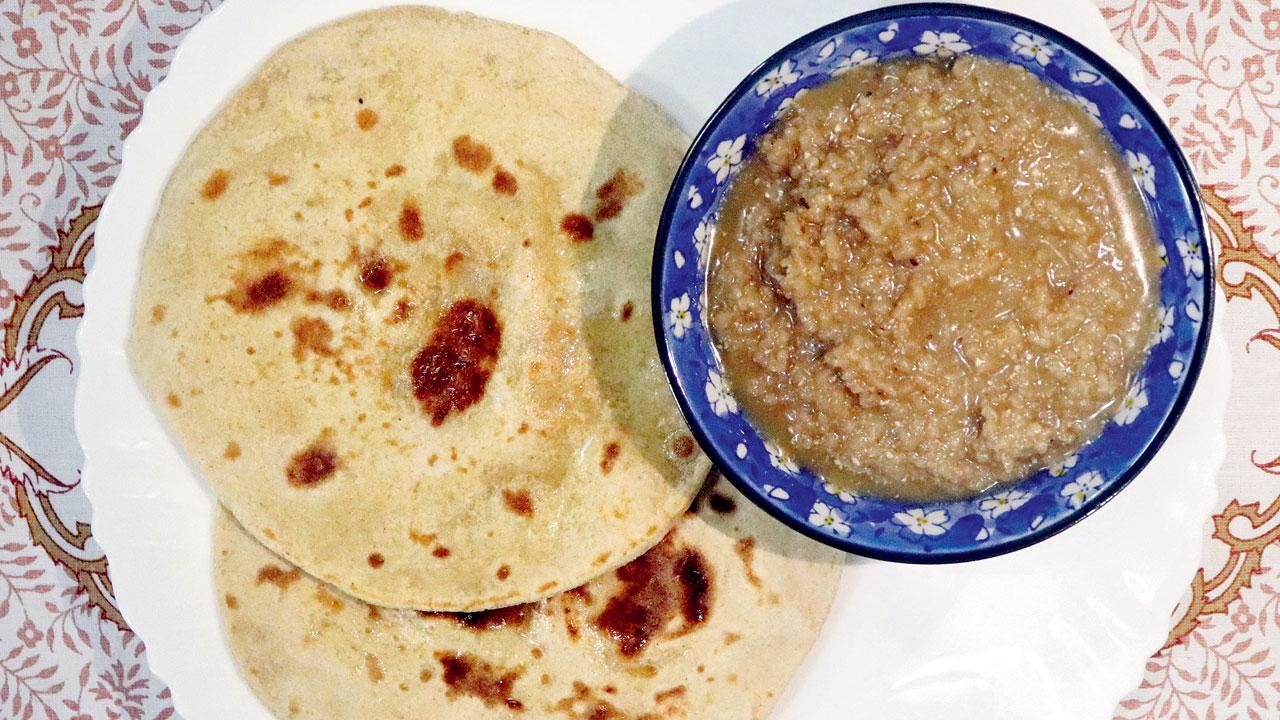
Rasiya and roti
For tempering
3 tsp ghee
1 tsp jeera
2 green chillies
2 cloves
1 green elaichi
Method
Cook plain rice separately with two cups of water. For dal, put chana dal in a vessel, and dice dudhi into small cubes. Add turmeric and salt, along with five cups of water. Cook until done. Temper with jeera, mirchi, and laung elaichi. Serve dal on a bed of rice.

For Kandivli-based Smita Verma and her friend Alpana Varma, founders of The Bihari Studio—a platform for promoting Bihari food and art in Mumbai—Surya devta or Sun god is the source of all life on Earth. Pic/Anurag Ahire
Bengaluru-based food blogger Kumar Nachiket thinks of Chhath puja as a festival which celebrates not only the rising sun but also the setting sun, conveying that we should celebrate every aspect of our lives. “Chhath puja has been celebrated since the times of the Mahabharata, in a place called Bhagalpur, which was then called Ang Pradeshm, the kingdom of Karna,” he informs. For prasad, Nachiket makes kasaar, a typical Champaran dessert of rice flour laddoo with lots of dry fruits and dry coconut.

Alpana Varma
“During Chhath puja, you can see people washing rice and leaving it to dry in the sun. The rice is then ground into rice flour, to which melted jaggery, dry fruits, cloves, cardamom and dry coconut are added, and then shaped into a laddoo. The size is generally twice of a normal laddoo. It tastes delicious and is a must-have when you visit Champaran during Chhath Puja,” he adds. Another of his favourite is khaja, a dessert pastry made with wheat flour that is kneaded into a soft dough and then rolled into then sheets, before being layered over each other.

Kumar Nachiket
When deep-fried, the layers puff up. It is then dipped into chashni (sugar syrup) and served. The gud wala thekua is another speciality that is unique to the Champaran region. It is softer and tastier than the normal thekua, where wheat flour is mixed with ghee before adding dry fruits. Molten jaggery is added to this mix and then shaped into thekua using special thekua moulds to give it a unique shape. It is then deep-fried in oil. In savouries, Nachiket’s favourite is lauki pakoras and kerao ghughni (grey peas ghughni) that is made using mustard oil and whole garam masalas. It requires lots of onions, which imparts the dish a sweet flavour. It is slow-cooked in a copper kadhai for a long time so that the kerao melts in the mouth upon first bite.
Kerao ghughni

Ingredients
250 gm green peas or kerao
3 onions
4 tbsp mustard oil
2 bay leaf
1 tbsp cumin seeds
2 dried red chillies
1 inch cinnamon stick
4 cloves
1 tbsp peppercorns
1 tbsp ginger garlic paste
2 potatoes
2 tomatoes
1 tbsp salt
1/2 tsp turmeric
1 tsp cumin powder
1 tbsp red chilli powder
1 1/2 tbsp coriander powder
1 1/2 tbsp garam masala
1 tsp pepper powder
1 tbsp lemon juice
1 tbsp coriander leaves
Method
Soak the kerao or green peas overnight or for eight hours. Pressure cook them with some chopped onions for one whistle. Transfer to a bowl and reserve stock. In a pressure cooker, heat mustard oil till it gets smoky. Add a bay leaf, cumin seeds, dried red chilli, a cinnamon stick, green and black cardamom, cloves and some peppercorn. Saute well and then add sliced onions and fry well. Add ginger garlic paste, potatoes and some tomato. Mix well and allow the potatoes to cook for a while. Add the masalas and roast well. Sprinkle some water so that it doesn’t stick to the pan. Transfer the boiled kerao to the cooker, mix well and cook for another 10 minutes. Then, add water and cook for another whistle. Garnish with lemon juice and coriander leaves. Serve hot.
 Subscribe today by clicking the link and stay updated with the latest news!" Click here!
Subscribe today by clicking the link and stay updated with the latest news!" Click here!










